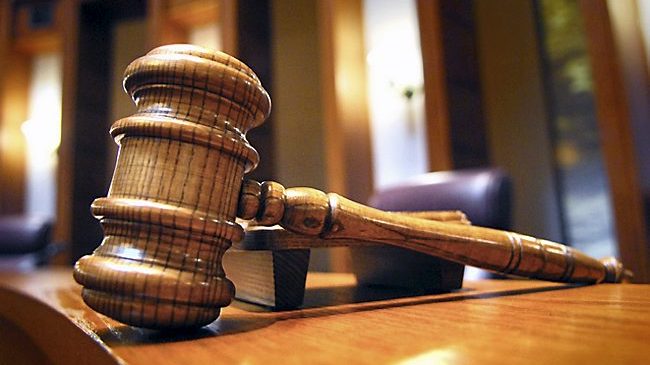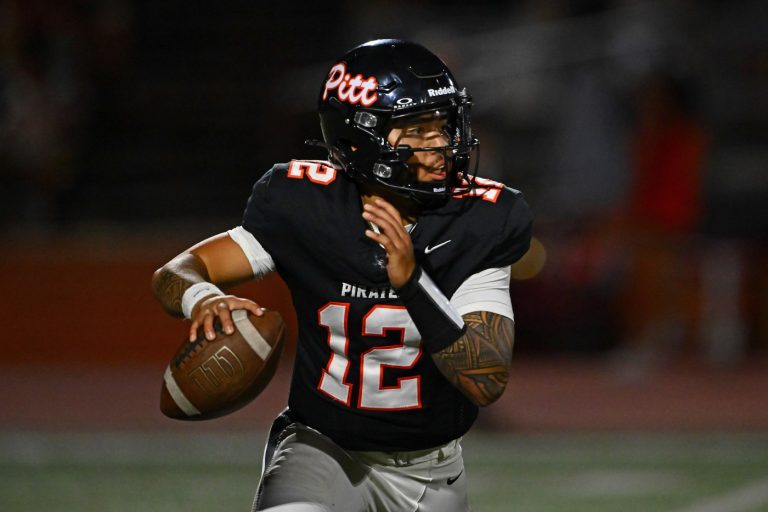On the fourth day of the child sex assault case against a 35-year-old Fairfield man, the nature of child sexual abuse — specifically child sexual abuse accommodation syndrome — was on trial in Solano County Superior Court.
Deputy District Attorney Luke B. Leichty questioned Blake D. Carmichael, an associate clinical professor with UC Davis Health Children’s Hospital, with Carmichael saying he had served as an expert witness for both defense attorneys and prosecutors.
At the outset of his testimony, Carmichael, a witness for the prosecution, said child sexual abuse is a crime, not a syndrome — the latter generally regarded as a condition defined by a set of related symptoms.
During the afternoon session in Department 1, Carmichael’s statements took on the air of a tutorial, with his face directed toward jurors as he spoke.
CSAAS, as the syndrome is called, originated in a 1983 article by Dr. Roland C. Summit in Child Abuse & Neglect.
The understanding of CSAAS has been expanded in the last four decades with updates to Summit’s original piece, which describes “what we know about child sexual abuse,” said Carmichael.
His statements came after three days of testimony, most of it by the victim, now 18 and related to Martinez. While on the witness stand, she remembered some specific actions related to the alleged sexual abuse but not all, often saying, “I don’t remember.”
And from time to time, Carmichael’s testimony appeared to reinforce the core of Leichty’s prosecution strategy and, at the same time, reinforce the victim’s memory of what happened, and when and where it happened.
Martinez is out of custody on bail but faces 10 criminal counts — seven for lewd and lascivious acts with a child under 14, two for aggravated sex assault involving oral copulation and one for an attempted lewd and lascivious act with a child under 14. The alleged crimes reportedly began in November 2018 and continued to April 2019, when the victim was a middle school student and lived in Vacaville. (The Reporter typically does not identify victims of sexual assault.)
Carmichael said the normal coping behavior of sexually abused children may not square with the beliefs and expectations typically held by adults.
Summit, he explained, came to believe, through his observations and experience with sexually abused children, that the victims of such abuse try to resolve the experiences in four ways: Secrecy, helplessness, entrapment and accommodation, and “delayed and conflicted disclosure.”
As he spoke, Martinez, seated at the defense table and again dressed in a dark gray suit, dark shirt and black tie, appeared to closely follow the testimony.
Children, added Carmichael, experience sexual abuse in the context of “the relationship with the perpetrator” and they are abused by people they know and typically trust.
The nature of the relationship between the child and the perpetrator “affects how they experience and talk about” the abuse, he noted.
And because the abuser can provide “special attention” and “material goods,” the victim, “under the influence of the relationship,” can continue to have sexual relations with the perpetrator, he noted.
As for secrecy in such cases, “The perpetrator is motivated by others not knowing what’s going on,” said Carmichael and added, “From the child’s perspective, they may be worried” about going against the perpetrator’s wishes, since are taught to obey authority figures.
Additionally, a child may be experience embarrassment, shame, guilt and blame themselves for the delay in telling another adult about the sexual abuse. Adults, he added, may be surprised that “they didn’t see the signs” of sexual abuse.
“People have a hard time understanding the delay” in reporting sexual abuse, said Carmichael, citing such high-profile media cases as Penn State (2011, Jerry Sandusky) and Michigan State University (2015, Larry Nassar, though the abuse began in at least 1997).
Children, he said, learn, when suspecting sexual abuse is about to begin, “to say no, run and tell someone.”
But the perpetrator is “bigger, stronger, more sophisticated” while the victim is smaller and more vulnerable, said Carmichael.
Some signs of a child suffering sexual abuse can be determined by behaviors, such as a child walking around the house avoiding people, wearing an extra pair of pajamas, “and staying at school longer,” he said.
Carmichael said child abuse experts, in a general consensus, believe “most kids don’t tell right away.” The time of disclosure could take months, a year or sometimes after they turn 18, he added.
When a young sexual abuse victim makes statements that appear to be inconsistent, it is often because they don’t have the experience and vocabulary of an adult, he said, adding that children do not fully understand abstract concepts such as time, sequence and duration.
“Peripheral things,” said Carmichael, “may not be so easily remembered” and disclosures may be “incremental,” or piecemeal, over time.
“There are a lot of reasons why kids delay” in reporting sexual abuse, he added.
Under cross-examination, Deputy Public Defender Pamela Boskin questioned the Summit article, saying CSAAS “is not a mental health diagnosis.”
Carmichael agreed, but added, “There is no magical way to tell if a child is telling the truth.”
The Summit article, he said, had attracted criticism and support, with many clinicians using his findings to determine if a child has been sexually abused.
Summit, added Carmichael, tried to educate a segment of society about why young victims of sexual abuse do not disclose immediately.
Boskin noted Summit was not a researcher. Carmichael agreed, adding that the doctor based his findings on what he observed.
Carmichael agreed with Boskin that the 1983 article was not “peer-reviewed,” meaning it was not subject to rigorous scholarly review or scrutiny by other experts in the field.
During the trial’s third day, Wednesday, Boskin continued her effort to challenge the prosecution’s case, asking the victim if she had, at any time, undergone a sexual assault examination or saved bedding, which may have had DNA evidence.
“No,” replied the victim, and the police never came to gather evidence, Boskin noted.
On redirect, Leichty asked, “Did you lie to hurt your father?”
“No,” she said.
On further redirect, Leichty noted that the victim, speaking to another investigator during a 2022 interview, did not remember some oral copulation encounters with the defendant but did recall other instances.
A former middle school classmate, Connor Phelps, took the stand afterward, testifying that he and the victim knew one another in eighth grade and she disclosed some information about suffering sexual abuse by the defendant, via in-person meetings and through social media messages.
Related Articles
Antioch police seek help in identifying person of interest in Jan. 3 shooting
Body found on I-80 died of natural causes, officials say
Arrest made in shooting near Mt. Madonna County Park
California prisons issue statewide lockdown after 200 prisoners rush corrections officers, injuring nine in riot
Police arrest four Oakland men in connection to string of Bay Area burglaries
There were times, Phelps told Leichty, that she was “visibly upset” at least one time when discussing the alleged abuse with him.
On the trial’s second day, Tuesday, the victim said she had been “trying to repress everything to function as human being in society.”
She told Leichty that her mind “went blank” during the first alleged assault, around Christmas 2018.
The series of alleged assaults over the half-dozen months left with a “feeling of just being tired of everything,” she said on Tuesday. Afterward, she recalled, she could not sleep for several hours, “pacing, listening for footsteps and crying.”
“Did you call the police?” Leichty asked.
“No,” she said. “I don’t really know why.”
If convicted at trial, Martinez likely faces 50 or more years in state prison and hefty fines.
Solano County Superior Court Judge Jeffrey C. Kauffman, who is presiding over the case in Department 1, told jurors the trial would resume at 10 a.m. Friday in the Justice Center in Fairfield.











+ There are no comments
Add yours